Music Tour to Dresden
Visit the city where Bach, Schumann, Wagner, Grieg and Mahler all lived and made music.
Highlights
Singing in the Frauenkirche
Performing on the “Butterfly Stage” in Bad Lausick
Visiting Richard Wagner’s house in Graupa
Attending a performance at the Semperoper Dresden
Sutton Valence SchoolI was able to have a big hand in the planning and suggest things to do which made the trip fit our needs perfectly
Suggested itinerary
What's included*
*Excursion fees may not be included in this tour – please contact us to learn more.
Recommended excursions
Arguably the symbol of the city and of its rebirth, the Frauenkirche was reduced to just a heap of rubble at the end of WWII. Reconstruction started in the 1990s and was supported by people from all over the world. The building is now a symbol of peace and reconciliation. Access to the church is free of charge but for a fee, it is also possible to ascend the Dome from where visitors can enjoy spectacular views over Dresden.
Fully restored to its former splendour after being completely destroyed during WW2, the Royal Palace is home to one of the largest art collections in Europe. Visitors have access to the Green Vault, which houses the largest treasure collection in Europe, the Giant Hall of the Armoury, the Royal State Apartments of Augustus the Strong, the Coin Collection, the Renaissance Wing and the Collection of Prints, Drawings and Photographs. The Hausmannsturm Tower affords panoramic views over the city.
The Palace is an exquisite example of Baroque architecture. Originally built by Augustus the Strong as an Orangery and a setting for court festivities, the Palace houses today the Old Masters’ Picture Gallery, the Porcelain Collection and the Museum of Mathematics and Physics. The Zwinger Experience is a multimedia exhibition which uses Virtual Reality and 3D Sound Technology to truly immerse visitors in the history of the palace.
The Procession of Princes (Fürstenzug) is a 101-meter-long mural made with 25,000 Meissen porcelain tiles. It depicts the history of the Wettins, Saxony’s ruling family, as a horse-drawn procession of larger-than-life riders.
Guided tours let students discover the magnificent architecture and the history of the Semperoper. Built in 1838-41 by Gottfried Semper, and destroyed by fire in 1869, the opera was rebuilt from 1871 to 1878 under the direction of Semper’s son Manfred in the style of the Italian High Renaissance. After the destruction in 1945, it was restored and reopened in 1985.
The “Sächsische Dampfschiffahrt” has the oldest and largest paddle steamer fleet in the world with its nine historical steamers. Students will be able to explore Saxony from the water and enjoy breath-taking views between the Saxon Wine Road and Saxon Switzerland. Tours start in Dresden Old Town and continue upstream as far as the Loschwitz Bridge in Blasewitz, also known as the “Blue Wonder”.
Augustus the Strong converted what was originally a hunting lodge for Duke Maurice of Saxony into a splendid baroque palace surrounded by a large pond and park. One of the prettiest castles in Saxony, it contains the most important collection of hunting trophies in Europe and a “Feather Room” with over a million feathers.
Richard Wagner moved to Graupa in 1846 and it is here that he created the draft for his “Lohengrin” Opera. Visitors can explore his reconstructed living quarters and see original memorabilia such as festival souvenirs from Bayreuth, theatre show posters, first editions of his works, instruments from the former Royal Chapel in Dresden and one of the composer’s original death masks. Recently added multimedia devices allow visitors to watch performances of his operas and to listen to correspondence between the composer and his friends. The nearby hunting lodge contains an exhibition about the composer’s life and career and allows visitors to try their hand at conducting.
The town of Meissen is only a short drive from Dresden and it is a great destination for a full day trip. The Old Town at the foot of the Castle hill contains many historic buildings including the Frauenkirche whose tower hosts a porcelain carillon. The Cathedral is a Gothic building which stands next to the Castle on a hill overlooking the town itself. The porcelain factory is world-famous since 1710 and audio tours through its workshops can be booked daily.
The area around the German town of Markneukirchen, close to the Czech border, has been a well-known centre of excellence for musical instrument-making for over 350 years. Around 100 professional workshops are still in operation and students can book a visit to learn about how musical instruments are made. The town also boasts a Musical Instruments Museum with over 4,000 exhibits.
Although this impressive castle has a history spanning a thousand years, it is best known for its role in World War II as a German military prison for high ranking officers of the Allied Forces. Guided tours of the castle explain the ingenious methods devised by the prisoners to escape this fortress, which was considered to be escape-proof. The castle museum contains artefacts and uniforms used in the escape attempts.
Since 2013, this young orchestra has delighted and entertained audiences with performances of classical masterpieces in the splendid setting of the Zwinger Palace. Exclusive performances can be arranged for groups with a minimum of 40 students at a time to suit the group.

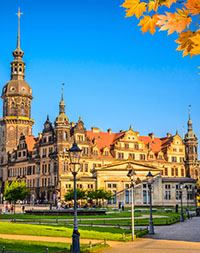
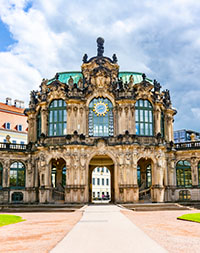



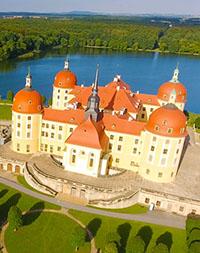

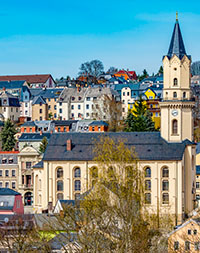


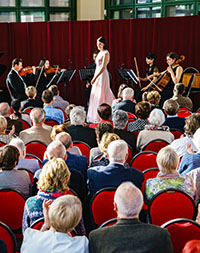
Convert venues





Typical accommodation

Why we like it for student groups:
Facilities:
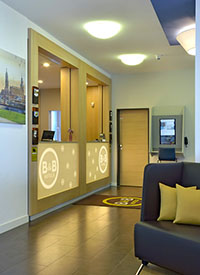
Why we like it for student groups:
Facilities:

Why we like it for student groups:
Facilities:


